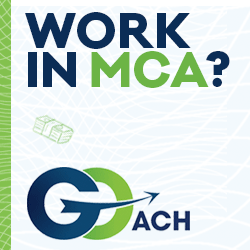Results 26 to 30 of 30
-
08-10-2020, 07:59 PM #26Member











 Reputation points: 17044
Reputation points: 17044
- Join Date
- Jul 2014
- Posts
- 92
I agree with Chambo. Issuing MCAs at usurious "rates" without a CFL cost Advanceme a LOT of money in litigation... The "it's not a loan" defense did not hold up, and it set the precedent for why a lot of members here can't fund in California. Not exactly the same set of circumstances but I think it'll be the same result.
-
12-24-2020, 03:46 PM #27Senior Member











 Reputation points: 16724
Reputation points: 16724
- Join Date
- Apr 2018
- Posts
- 104
Bumping this thread because it has the APR calculator I shared (post #11).
You're welcome.
https://dailyfunder.com/showthread.p...l=1#post143478
-
12-25-2020, 09:49 PM #28Senior Member











 Reputation points: 33996
Reputation points: 33996
- Join Date
- Jan 2015
- Location
- Laguna Beach
- Posts
- 463
The pitch: “Yes the APR seems high, but that’s only if you pay it off over the whole term. But you’re not gonna do that. Like we discussed, you’re going to pay it way early... which will bring the APR way down. Haha just kidding about the APR coming down... the opposite is true.”
-
12-26-2020, 08:35 AM #29Senior Member











 Reputation points: 81657
Reputation points: 81657
- Join Date
- Mar 2014
- Location
- Florida
- Posts
- 2,876
Regardless of what some politicians believe they are accomplishing an MCA Contract is NOT a loan -
A funder is PURCHASING An Asset "Future Sales (Receivables) - $100,00 of your future sales and for that we are giving you $$
upfront money today - $70,000 - A Discount is not nor ever will be an APR.
BTW - California has a similar Law - it does not make a difference to the merchant -Dave Lambert, Business Development
dave@fcbankcard.com
Merchant Services Consultant
High Risk Merchant Payment Solutions
SBA 7(a) Loans & Short-Term Funding
T/VM: 727-291-7890
Office: 727-233-1111
Skype: fc-financial
-
12-28-2020, 12:11 PM #30Sponsor











 Reputation points: 13031
Reputation points: 13031
- Join Date
- Jun 2014
- Posts
- 540
For MCA products NY SB 5470 requires APR to be calculated on "projected sales volume", which is contra to the practice up "tru-ing up" MCA recapture rates over the course of the contract. ILPA members, who overwhelmingly make bank loans not MCAs, seem to have been successful in imposing disclosure regulations best suited to bank loan products on the entire range of products made available to merchants by the alternative finance industry.
MCA focused funders and ISO's will have to work that much harder to eliminate merchant's confusion caused by this new law that attempts to allow a comparison of the relative size of different apples with a measuring stick built for bananas.
Does anyone have a link to the final reconciled bill signed by the Governor?
Similar Threads
-
“New York Lawmakers Say State Must Stop Enabling Predatory Loans”
By WestCoastFunding in forum Merchant Cash AdvanceReplies: 42Last Post: 12-17-2018, 05:58 PM -
New York State Is Probing*Abuses in Small-Business Lending
By channin19 in forum Merchant Cash AdvanceReplies: 30Last Post: 12-05-2018, 09:18 PM -
Need funder Debt collection New York state
By David35 in forum Deal BinReplies: 3Last Post: 02-16-2015, 10:29 AM -
Direct funder needed for Debt collection New York State
By David35 in forum Merchant Cash AdvanceReplies: 0Last Post: 01-28-2015, 02:18 PM -
CAN CAPITAL passes 4 Billion Funded Milestone
By Businesscap in forum Merchant Cash AdvanceReplies: 16Last Post: 04-30-2014, 04:43 PM



 Reply With Quote
Reply With Quote















